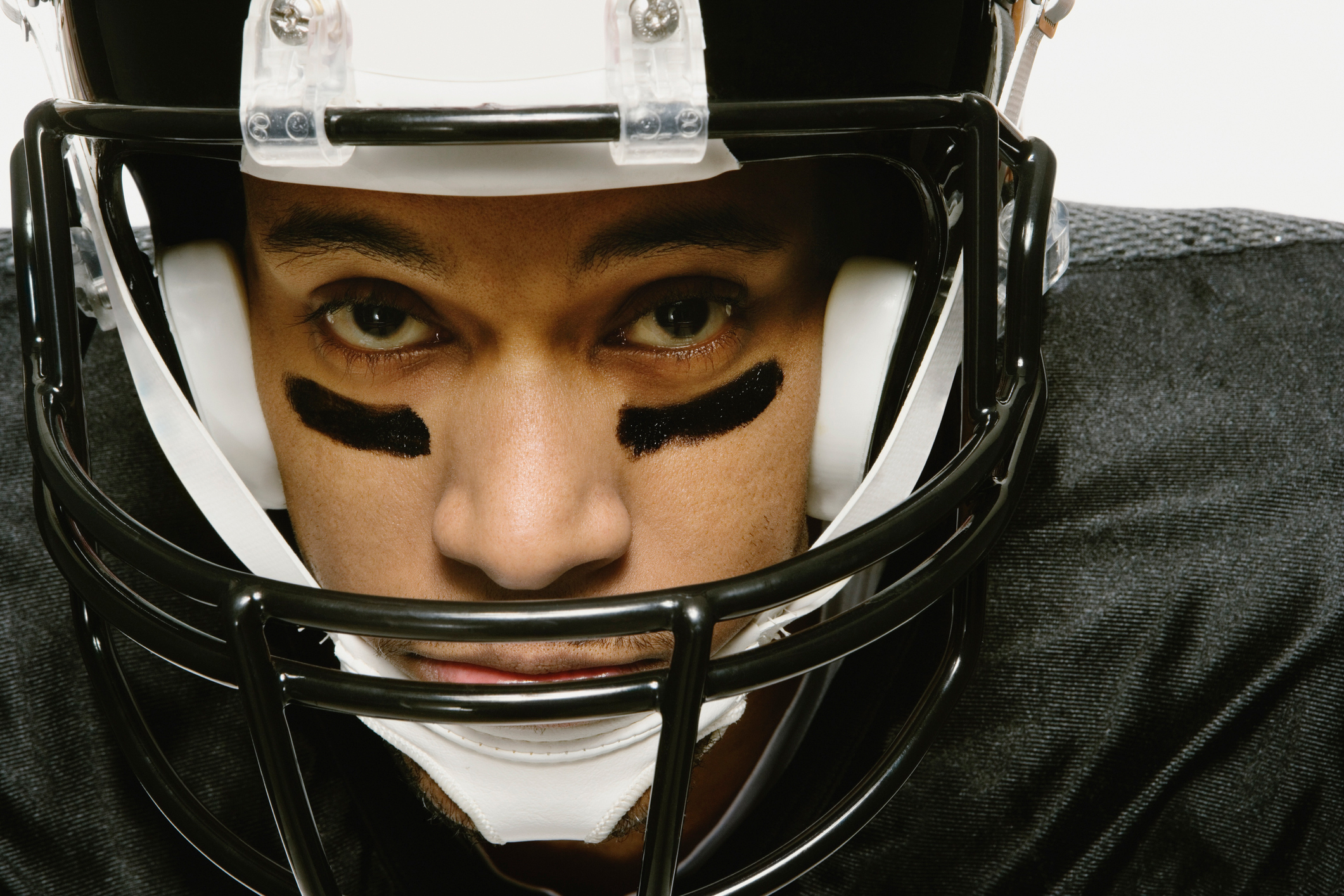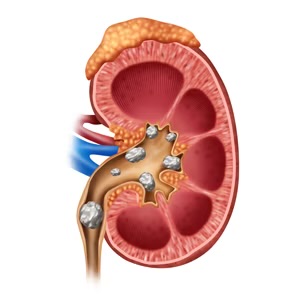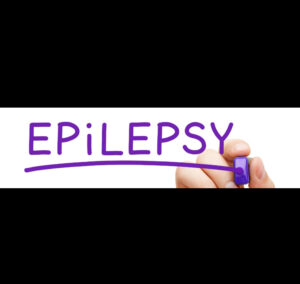Christopher C. Giza, MD and Jeffrey S. Kutcher, MD
Purpose of Review:
Concussions are a major public health issue, and particularly so in the setting of sports. Millions of athletes of all ages may face the risks of concussion and repeat concussion. This article introduces the terminology, epidemiology, and underlying pathophysiology associated with concussion, focused on sports-related injuries.
Recent Findings:
Concussion is a clinical syndrome of symptoms and signs occurring after biomechanical force is imparted to the brain. Because of the subjective nature of symptom reporting, definitions of concussion differ slightly in different guidelines. Concussion nomenclature also includes mild traumatic brain injury, postconcussion symptoms, postconcussion syndrome, chronic neurocognitive impairment, subconcussive injury, and chronic traumatic encephalopathy. Between 1.6 and 3.8 million sports-related concussions are estimated in the United States annually, particularly in youth athletes. Rates of concussion are higher in sports such as football, rugby, ice hockey, and wrestling in males, and soccer and basketball in females. The underlying pathophysiology of concussion centers on membrane leakage, ionic flux, indiscriminate glutamate release, and energy crisis. These initial events then trigger ongoing metabolic impairment, vulnerability to second injury, altered neural activation, and axonal dysfunction. While the linkage between acute neurobiology and chronic deficits remains to be elucidated, activation of cell death pathways, ongoing inflammation, persistent metabolic problems, and accumulation of abnormal or toxic proteins have all been implicated.
Summary:
Concussion is a biomechanically induced syndrome of neural dysfunction. Millions of concussions occur annually, many of them related to sports. Biologically, a complex sequence of events occurs from initial ionic flux, glutamate release, and axonal damage, resulting in vulnerability to second injury and possibly to longer-term neurodegeneration.
INTRODUCTION
Concussions have moved to the forefront of public awareness, particularly in the world of sport. In the past few years, multiple national and international organizations have made considerable efforts to publish sports concussion reviews, guidelines, position statements, and best practice recommendations.1–6 (Refer to Appendix A for a summary of the American Academy of Neurology’s evidence-based guideline for clinicians.) The lay press has covered concussion injuries in high-profile and youth athletes who participate in sports from football to soccer to snow sports. While concern for premature return-to-contact risk has traditionally been the focus for sports-related concussion, a growing worry exists of the potential for long-term cumulative impairments resulting from multiple concussions over an athlete’s career. It is clear that the medical issues related to sports concussion are complex, and therefore a multidisciplinary approach is optimal for the evaluation and management of these injuries.
DEFINITIONS
The term concussion originates from the Latin concussio or concutere, which means “to strike together” or “to shake violently.” Concussion has generally been used to refer to the mild end of the traumatic brain injury (TBI) spectrum, where biomechanical forces transmitted to the brain induce physiologic dysfunction and neurologic impairments, generally in the absence of detectable macrostructural damage. While some have used the terms concussion and mild TBI synonymously, there can be distinctions.
Traditionally, the severity of TBI has been measured by the Glasgow Coma Scale (GCS), a clinical rating with a maximum of 15 points given for eye opening, speech, and motor response. This scale has been validated across the injury spectrum to be predictive of long-term outcomes, but is not well suited to distinguish variations in recovery at the mild end. Mild TBI generally refers to a GCS of 13 to 15, regardless of mechanism or demonstrable structural injury using CT or x-ray. Therefore, it is possible for someone with a mild TBI by GCS to have a skull fracture or intracranial hemorrhage, as long as their clinical rating on the GCS is within 13 to 15.
Concussion may be most widely thought of as a clinical syndrome of neurocognitive or behavioral dysfunction resulting from a biomechanically induced alteration of brain physiology. This generally occurs in the absence of intracranial pathology, although advanced neuroimaging suggests that microstructural changes can be detected. Common acute symptoms include headache, dizziness, nausea, confusion, memory impairment, imbalance, and behavioral changes. Underlying cerebral dysfunction is manifest primarily through clinical symptoms or measurable neurologic impairments in cognition, reaction time, balance, or behavior, and, for most, is recoverable over time. No definitive biomechanical threshold has been identified to induce the concussion syndrome in all individuals.
In practice, the terms concussion and mild TBI are often used interchangeably. However, beyond the historical and clinical distinctions mentioned above, the perception of what these terms mean is often different in the patient and in the medical care provider. Recent studies suggest that the term mild TBI was associated with a greater severity and seriousness of injury, while concussion was less alarming.7
More recently, the concept of subconcussive injury has been increasingly used in both the lay press and the medical literature. While no universally accepted definition exists for subconcussive injury, the theoretical construct is that a biomechanically induced physiologic/microstructural injury is imparted but the affected individual does not manifest symptoms. The predominant concern for subconcussive injury has been in the sports and military arenas, because of the possibility/probability of sustaining multiple biomechanical injuries in rapid succession with inadequate time for full physiologic recovery in between injuries. Experimental evidence exists to suggest that such a scenario can result in increased acute/subacute vulnerability and possibly also a greater risk for longer-term impairment or even neurodegeneration.
Postconcussion symptoms are simply the subjective report of neurobehavioral impairments after concussion. The most common acute symptoms include headache, nausea, dizziness, confusion, memory impairment, incoordination, attention problems, and behavioral changes. Postconcussion syndrome has been described as persistent symptoms (headache, dizziness, memory impairment, irritability, attention/concentration problems, depression, anxiety) lasting a variable duration (more than 3 months up to 12 months or longer) following a concussion.8–12 Some of the definitions8–10 include implications that some loss of consciousness occurred and that the etiology of the symptoms was predominantly psychological dysfunction. More recently, chronic postconcussion syndrome has been used to refer to chronic persistent symptoms seen in a small subset of individuals after a concussion.12
In addition to the chronic symptoms after concussion discussed above, the terminology chronic neurocognitive impairment has been proposed by the American Medical Society for Sports Medicine.3 This refers to demonstrable neurologic, cognitive, or behavioral impairment, generally measured using validated tests or neuropsychological tools. Chronic neurocognitive impairment is detected during a patient’s lifetime, and multiple studies support the presence of this sequela, particularly in professional athletes with longer exposure to contact sports.1 These impairments are not necessarily progressive, as longitudinal data are still lacking. Lastly, the diagnosis of chronic traumatic encephalopathy refers to a pathologically proven accumulation of tau in the brain, reported in multiple cases of retired athletes and military personnel.13 In retrospect, these individuals had neurobehavioral impairments during life; however, the causal linkage to earlier concussions and a progressive neurodegenerative course are implied but unproven. Some have classified chronic traumatic encephalopathy as essentially synonymous with dementia pugilistica,13,14 while others have included it as only one type of chronic TBI.12
EPIDEMIOLOGY
The vast majority of sports-related TBIs are concussions. It is estimated that 1.6 to 3.8 million sports-related concussions occur annually in the United States alone.15 It is likely that this is an underestimate, as many concussions do not come to medical attention. Over the past decade, the number of diagnosed concussions (in and out of sports settings) has increased, most likely because of increased public awareness and concern about these ubiquitous injuries. TBI in general, including concussions, has the highest rates in the pediatric age ranges.16
While the total number of sports concussions is on the rise, equally important in assessing concussion risk are the rates of concussion. In sports, this is usually quantified as the number of diagnosed concussions per “athlete exposure” (one event, game, or practice in which the athlete participates and is at risk). While imperfect—this metric does not take into account the actual duration of the contact-risk exposure—concussion rates offer a reasonable comparator to estimate risk between different sports.
Evidence-based reviews and primary studies have investigated the risk of concussion by sport.1 Some sports, such as boxing and mixed martial arts, do not have good published data upon which to determine concussion rates but are almost certainly among the highest risk. For sports with published data, in males, the highest-risk sports are football, rugby, ice hockey, and wrestling. In females, the highest-risk sports are soccer and basketball.17
While males sustain more concussions than females, in sports with comparable rules played by both genders (soccer, basketball, softball/baseball), females have about twice the rate of concussion as males.18 The reasons for these gender differences are uncertain, but most research has focused on differences in neck strength.19 Other possibilities include hormonal differences20 or differences in symptom reporting.21
One distinct component of sports-related concussion is the propensity for repeated injuries. Rates of repeat TBI vary widely, from 5.6% to 36% of the TBI population at large, and likely higher in contact/collision sports settings.22 It is this characteristic that makes the evaluation and management of sports concussions unique. Sports concussions are a mild form of TBI, and, when sustained, an expectation of recovery and eventual return-to-contact-risk activity exists. This likelihood for returning to risk and the chance for repeat concussions is one of the driving points behind the need for improved recognition and diagnostics, as well as for more objective programs for return to play.
PATHOPHYSIOLOGY
The underlying pathobiology of concussive injury has been well summarized.23,24 These insights originated from animal data and were subsequently confirmed using invasive monitors in cases of severe human TBI. More recently, the use of advanced neuroimaging has allowed demonstration, with noninvasive methods, of many components of the neurometabolic cascade after concussion.25
Biomechanical forces distort cellular membranes. In neurons, this results in transient membrane defects (mechanoporation) and ionic flux. An indiscriminate release of potassium and influx of sodium and calcium occurs, generating a physiologic state resembling the spreading depression described in migraine. At the same time, these depolarized neurons trigger a widespread release of glutamate. The membrane ionic pumps deplete intracellular energy stores, which results in a relative energy crisis. Simultaneously, an initial decrease in cerebral blood flow occurs. This mismatch, termed uncoupling, worsens the metabolic dysfunction. It is likely that this window of metabolic dysfunction determines the time period of increased biological vulnerability to a second concussion, as shown by experimental work.26 However, determining this window in human patients is more challenging. A study using magnetic resonance spectroscopy reported a reduction of the metabolite N-acetylaspartate for up to 30 days after a concussion in adult athletes.27 Interestingly, a subset of these athletes sustained a second concussion before full recovery and the levels of N-acetylaspartate took longer to recover.27,28 While not ready for routine clinical use, these studies in animals and humans support the concept of biological vulnerability after concussion and underlie the recommendation “when in doubt, sit it out.”
Stretching of axons also results in impaired transport and connectivity in the concussed brain. Beading and undulations in axons have been reported in experimental studies of concussion.29 Human studies using diffusion tensor imaging as a surrogate measure for axonal integrity have reported alterations in fractional anisotropy (directional diffusion of water) in the white matter of concussed children,30 adolescents,31athletes,32 and military personnel.33 In multiple studies, there has been loose correlation between diffusion tensor imaging measures and clinical cognitive testing. No gold standard normative database exists yet for routine clinical use of diffusion tensor imaging, but again, the noninvasive imaging provides translational support for the neurobiological changes originally discovered in animal models.
The linkage between acute pathophysiology and chronic changes after concussion is an area of high priority for study, but no direct causal pathways have yet been proven. Some ongoing hypotheses include the development of chronic excitotoxicity due to delayed glutamate release, persistent metabolic impairment that creates vulnerability to repeated injury or even to excessive neural activation, or initiation of chronic inflammatory states and abnormal protein degradation that may result in toxic accumulations of amyloid or tau. Each of these has been proposed as a possible physiologic link between concussion and later neurodegeneration. Current evidence suggests for the most part that an isolated concussion is recoverable, but the likelihood of developing persistent symptomatology and chronic dysfunction may be related to multiple concussions with inadequate time for recovery.
CONCLUSION
Concussion is a clinical syndrome of mild TBI that is initiated by biomechanical force and results in a predominantly functional, physiologic injury. Common acute symptoms include headache, dizziness, nausea, confusion, memory impairment, imbalance, and behavioral changes.
Concussions are a major public health issue, with millions occurring annually, many in the context of sports. The rates for concussion and TBI are highest in the pediatric and adolescent age ranges. The highest-risk sports for males of all ages include football, rugby, ice hockey, and wrestling, and for females, soccer and basketball. In comparable sports (soccer, basketball, and softball/baseball), females have about twice the rate of concussion as males.
The clinical manifestations and physiologic perturbations associated with concussion are largely recoverable with time, but repeated concussions, particularly within a window of vulnerability, may open the door for more chronic postconcussive syndrome or even neurodegeneration. A basic understanding of concussion definitions and pathophysiology is essential for the practicing clinician.
USEFUL RESOURCES
The American Academy of Neurology (AAN) has a number of current resources on sports concussions for physicians, coaches and athletic trainers, and patients and their families.
Sports Concussion Toolkit
Resources on sports concussion for physicians, coaches, parents, and athletes. For a complete list of resources included in the Sports Concussion Toolkit, see Appendix B.
Neurology Now Traumatic Brain Injury Collection for iPad
A special iPad app issue, published in July 2014, of collected articles on traumatic brain injury and concussion published in Neurology Now, the AAN’s magazine for neurologic patients and their caregivers. The Neurology Now app and access to all content is free and available from the Apple App Store.
KEY POINTS
- Medical issues related to sports concussion are complex, and therefore a multidisciplinary approach is optimal for the evaluation and management of these injuries.
- The term concussion has generally been used to refer to the mild end of the traumatic brain injury spectrum, where biomechanical forces transmitted to the brain induce physiologic dysfunction and neurologic impairments, generally in the absence of detectable macrostructural damage.
- In sports, the rate of concussion is usually quantified as the number of diagnosed concussions per “athlete exposure” (one event, game, or practice in which the athlete participates and is at risk).
- For sports with published data, in males, the highest-risk sports for concussion are football, rugby, ice hockey, and wrestling. In females, the highest-risk sports are soccer and basketball. Females have a higher rate of concussions than males in comparable sports.
- One distinct component of sports-related concussion is the propensity for repeated injuries.
- Recently, the use of advanced neuroimaging has allowed demonstration, with noninvasive methods, of many components of the neurometabolic cascade after concussion.
- Current evidence suggests for the most part that an isolated concussion is recoverable, but the likelihood of developing persistent symptomatology and chronic dysfunction may be related to multiple concussions with inadequatetime for recovery.
- Concussions are a major public health issue, with millions occurring annually,many in the context of sports.
REFERENCES
1. Giza CC, Kutcher JS, Ashwal S, et al. Summary of evidence-based guideline update: evaluation and management of concussion in sports: report of the Guideline Development Subcommittee of the American Academy of Neurology. Neurology 2013; 80 (24): 2250– 2257. [PMC free article] [PubMed] [Google Scholar]
2. McCrory P, Meeuwisse WH, Aubry M, et al. Consensus statement on concussion in sport: the 4th International Conference on Concussion in Sport held in Zurich, November 2012. Br J Sports Med 2013; 47 (5): 250– 258. [PubMed] [Google Scholar]
3. Harmon KG, Drezner J, Gammons M, et al. American Medical Society for Sports Medicine position statement: concussion in sport. Clin J Sport Med 2013; 23 (1): 1– 18. [PubMed] [Google Scholar]
4. Graham R, Rivara F, Arbogast K, et al. Sports-related concussions in youth: improving the science, changing the culture. Institute of Medicine of the National Academies. www.iom.edu/Reports/2013/Sports-Related-Concussions-in-Youth-Improving-the-Science-Changing-the-Culture.aspx. Released October 30, 2013. Accessed October 3, 2014.
5. Broglio SP, Cantu RC, Gioia GA, et al. National Athletic Trainers’ Association position statement: management of sports concussion. National Athletic Trainers’ Association. www.nata.org/sites/default/files/Concussion_Management_Position_Statement.pdf. Published March 2014. Accessed October 3, 2014.
6. Carney N, Ghajar J, Jagoda A, et al. Concussion guidelines step 1: systematic review of prevalent indicators. Neurosurgery 2014; 75 (supp): S3– S15. [PubMed] [Google Scholar]
7. DeMatteo C, Greenspoon D, Levac D, et al. Evaluating the Nintendo Wii for assessing return to activity readiness in youth with mild traumatic brain injury. Phys Occup Ther Pediatr 2014; 34 (3): 229– 244. [PubMed] [Google Scholar]
8. Centers for Disease Control and Prevention. International classification of diseases, ninth revision, clinical modification (ICD-9-CM). www.cdc.gov/nchs/icd/icd9cm.htm. Updated June 18, 2013. Accessed October 3, 2014.
9. Centers for Disease Control and Prevention. International classification of diseases, tenth revision, clinical modification (ICD-10-CM). www.cdc.gov/nchs/icd/icd10cm.htm. Updated August 22, 2013. Accessed October 3, 2014.
10. American Psychiatric Association. Diagnostic and statistical manual of mental disorders: DSM-IV. 4th ed Washington, DC: American Psychiatric Association; 1994. [Google Scholar]
11. Bigler E. Neuropsychology and clinical neuroscience of persistent post-concussive syndrome. J Int Neuropsychol Soc2008; 14 (1): 1– 22. [PubMed] [Google Scholar]
12. Jordan BD. The clinical spectrum of sport-related traumatic brain injury. Nat Rev Neurol 2013; 9 (4): 222– 230. [PubMed] [Google Scholar]
13. McKee AC, Stern RA, Nowinski CJ, et al. The spectrum of disease in chronic traumatic encephalopathy. Brain 2013; 136 (pt1): 43– 64. [PMC free article] [PubMed] [Google Scholar]
14. Stern RA, Daneshvar DH, Baugh CM, et al. Clinical presentation of chronic traumatic encephalopathy. Neurology2013; 81 (13): 1122– 1129. [PMC free article] [PubMed] [Google Scholar]
15. Langlois JA, Rutland-Brown W, Wald MM. The epidemiology and impact of traumatic brain injury: a brief overview. J Head Trauma Rehabil 2006; 21 (5): 375– 378. [PubMed] [Google Scholar]
16. Centers for Disease Control and Prevention. Rates of TBI-related emergency department visits by age group–United States 2001–2010. www.cdc.gov/traumaticbraininjury/data/rates_ed_byage.html. Updated February 24, 2014. Accessed October 3, 2014.
17. Bakhos LL, Lockhart GR, Myers R, Linakis JG. Emergency department visits for concussion in young child athletes. Pediatrics 2010; 126 (3): e550– 556. [PubMed] [Google Scholar]
18. Lincoln AE, Caswell, Almquist JL, et al. Trends in concussion incidence in high school sports: a prospective 11-year study. Am J Sports Med 2011; 39 (5): 958– 963. [PubMed] [Google Scholar]
19. Tierney RT, Sitler MR, Swanik KA, et al. Gender differences in head-neck segment dynamic stabilization during head acceleration. Med Sci Sports Exer 2005; 37 (2): 272– 79. [PubMed] [Google Scholar]
20. Wunderle K, Hoeger KM, Wasserman E, Bazarian JJ. Menstrual phase as predictor of outcome after mild traumatic brain injury in women [published online ahead of print November 20, 2013]. J Head Trauma Rehabil 2013. 10.1097/HTR.0000000000000006. [PMC free article] [PubMed] [Google Scholar]
21. Preiss-Farzanegan S, Chapman B, Wong T, et al. The relationship between gender and postconcussion symptoms after sports-related mild traumatic brain injury. PM R 2009; 1 (1934–1482): 245– 253. [PMC free article] [PubMed] [Google Scholar]
22. Prins ML, Giza CC. Repeat traumatic brain injury in the developing brain. Int J Dev Neurosci 2012; 30 (3): 185– 190. [PubMed] [Google Scholar]
23. Giza CC, Hovda DA. The neurometabolic cascade of concussion. J Athl Train 2001; 36 (3): 228– 235. [PMC free article] [PubMed] [Google Scholar]
24. Giza CC, Hovda DA. The new neurometabolic cascade of concussion. Neurosurgery 2014;75(suppl 4):S24–S33. [PMC free article] [PubMed] [Google Scholar]
25. Difiori JP, Giza CC. New techniques in concussion imaging. Curr Sports Med Rep 2010; 9 (1): 35– 39. [PubMed] [Google Scholar]
26. Prins ML, Alexander D, Giza CC, Hovda DA. Repeated mild traumatic brain injury: mechanisms of cerebral vulnerability. J Neurotrauma 2013; 30 (1): 30– 38. [PMC free article] [PubMed] [Google Scholar]
27. Vagnozzi R, Signoretti S, Tavazzi B, et al. Temporal window of metabolic brain vulnerability to concussion: a pilot 1H-magnetic resonance spectroscopic study in concussed athletes—part III. Neurosurgery 2008; 62 (6): 1286– 1295. [PubMed] [Google Scholar]
28. Vagnozzi R, Signoretti S, Cristofori L, et al. Assessment of metabolic brain damage and recovery following mild traumatic brain injury: a multicentre, proton magnetic resonance spectroscopic study in concussed patients. Brain 2010; 133 (11): 3232– 3242. [PubMed] [Google Scholar]
29. Johnson VE, Stewart W, Smith DH. Axonal pathology in traumatic brain injury. Exp Neurol 2013; 246: 35– 43. [PMC free article] [PubMed] [Google Scholar]
30. Mayer AR, Ling JM, Yang Z, et al. Diffusion abnormalities in pediatric mild traumatic brain injury. J Neurosci 2012; 32 (50): 17961– 17969. [PMC free article] [PubMed] [Google Scholar]
31. Wilde EA, McCauley SR, Hunter JV, et al. Diffusion tensor imaging of acute mild brain injury in adolescents. Neurology2008; 70 (12): 948– 955. [PubMed] [Google Scholar]
32. Gardner A, Kay-Lambkin F, Stanwell P, et al. A systemic review of diffusion tensor imaging findings in sports-related concussion. J Neurotrauma 2012; 29 (16): 2521– 2538. [PubMed] [Google Scholar]
33. MacDonald CL, Johnson AM, Nelson EC, et al. Functional status after blast-plus-impact complex concussive traumatic brain injury in evacuated United States military personnel. J Neurotrauma 2014; 31 (10): 889– 898. [PMC free article] [PubMed] [Google Scholar]
Articles from Continuum : Lifelong Learning in Neurology are provided here courtesy of American Academy of Neurology
Original Article – https://www.ncbi.nlm.nih.gov/pmc/articles/PMC4274166/





